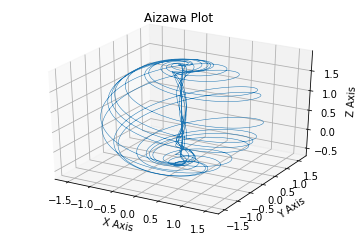(Hope it might help anyone wishing to do a data trace for windows from their Algo.)
- Code: Select all
/* Include Files */
#include <stdio.h>
#include <stdlib.h>
#include <stdarg.h>
#include <string.h>
#include <math.h>
#include <time.h>
#include <GL/freeglut.h>
#ifdef _MSC_VER
/* DUMP MEMORY LEAKS */
#include <crtdbg.h>
#endif
int trace_index; /* index of trace */
double red_position[2][3]; /* X,Y,Z of red trace*/
double xcen = 0.0, ycen = 0.0, zcen = 0.0 ; /* Coordinates of the point looked at */
int endofindex = 0;
double lines[300][3];
int numlines = 0;
The above is just the headers and the arrays for storing the trace which gets sent to the buffer using the following functions:
- Code: Select all
void draw_line2buffer(double position[2][3]){
/*if end of screen reached*/
if(position[1][0]==endofindex){
numlines=1;
lines[0][1] = position[0][1];
lines[0][0] = position[0][0];
lines[1][1] = position[1][1];
lines[1][0] = position[1][0];
}else{
numlines+=1;
lines[numlines-1][1] = position[0][1];
lines[numlines-1][0] = position[0][0];
lines[numlines][1] = position[1][1];
lines[numlines][0] = position[1][0];
}
glNewList(2,GL_COMPILE);
glBegin ( GL_LINES ) ;
glColor3f(1.0,0.0,0.0);
for(int i=1;i<numlines;i++){
glVertex3d ( lines[i-1][0], lines[i-1][1], 0.0 ) ;
glVertex3d ( lines[i][0], lines[i][1], 0.0 ) ;
printf("Position:%f , %f \n",lines[i-1][0],lines[i-1][1]);
printf("**************************************************\n");
printf("Position:%f , %f \n",lines[i][0],lines[i][1]);
}
glEnd () ;
printf("End of buffer*************************************\n");
glEndList();
}
Thats the buffer having been written to now the display function for writing to the window followed by the timer which kicks out the data continously to the red_points array:
- Code: Select all
void display ( void )
{
glClear ( GL_COLOR_BUFFER_BIT | GL_DEPTH_BUFFER_BIT ) ;
//glCallList( 1 ); :- you can call multiple lists from the buffer!! means Multiple traces
//glColor3d (1.0,0.0,0.0);
//glCallList( 1 );
glCallList( 2 );
glColor3d ( 1.0, 1.0, 0.0 ) ; /* White */
/* Draw some axes */
glBegin ( GL_LINES ) ;
glVertex3d ( 1.0, 0.0, 0.0 ) ;
glVertex3d ( -1.0, 0.0, 0.0 ) ;
glVertex3d ( 0.0, 1.0, 0.0 ) ; /*Y coord*/
glVertex3d ( 0.0, -1.0, 0.0 ) ;
glEnd () ;
glutSwapBuffers( );
glFlush( );
}
And the timer function:
- Code: Select all
void timer(int value){
/* Make your data come in here */
double x = ((double)trace_index);
double y = sin(x);
double z = 0;
Sleep(10);
/* Set the next timed callback */
glutTimerFunc ( 30, timer, 0 ) ;
/*set the last data as the first*/
for(int i=0;i<3;i++){
red_position[0][i] = red_position[1][i];
}
red_position[1][0] = x/100;
red_position[1][1] = y;
red_position[1][2] = z;
/*reset the index when trace gets to the end of screen*/
if(trace_index>100){
trace_index=0;}else{
trace_index = trace_index+1;
}
draw_sphere2(red_position);
draw_line2buffer(red_position);
glutPostRedisplay () ;
}
And tie it all together with some initializing and a GlutMainloop:
- Code: Select all
int main ( int argc, char *argv[] )
{
int pargc = argc ;
/* Initialize the array */
srand ( 1023 ) ;
for(int i=0;i<3;i++){
red_position[1][i] = 0;
}
trace_index = 0;
/* Set up the OpenGL parameters */
glEnable ( GL_DEPTH_TEST ) ;
glClearColor ( 0.0, 0.0, 0.0, 0.0 ) ;
glClearDepth ( 1.0 ) ;
/* Initialize GLUT */
glutInitWindowSize ( 600, 600 ) ;
glutInit ( &pargc, argv ) ;
glutInitDisplayMode ( GLUT_RGB | GLUT_DOUBLE | GLUT_DEPTH ) ;
/* Create the window */
glutCreateWindow ( "Harry Plotter" ) ;
glutDisplayFunc ( display ) ;
//glutReshapeFunc ( reshape ) ; - Not used (not really what its for!!)
glutTimerFunc ( 30, timer, 0 ) ;
/* Enter the GLUT main loop */
glutMainLoop () ;
#ifdef _MSC_VER
/* DUMP MEMORY LEAK INFORMATION */
_CrtDumpMemoryLeaks () ;
#endif
return 0 ;
}
I think that nailed it. I am sure there are other methods but this will do for me.
With Mingw64 installed on Windows compile with g++ -o Trace Trace.cpp -lopengl32 -lfreeglut -lglu32
freeglut can be downloaded and placed in each of Mingw folders include/ bin/ system32/*dll lib/*lib
Sneak a peak @ Shepherds latest works DarkSide - Chapter 2 - The Watchers
Or Read Kromos now :



